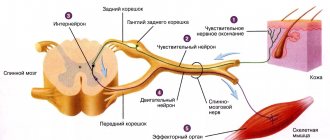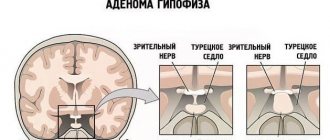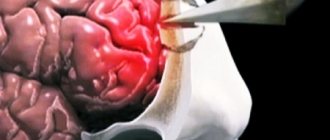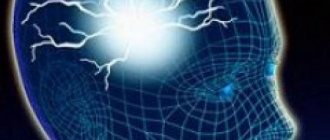Coma is an altered state of consciousness, with maximum inhibition of all functions of the central nervous system and serious disturbances in the functioning of the human body as a whole. Coma has been known since the times of Ancient Rome, where it was called “deep sleep,” and from French coma is translated as “hibernation.”
This condition is characterized by partial, and more often complete loss of consciousness, loss or absence of reflexes and disorder of all vital systems in patients. This is caused by a violation of interneuron connections in the brain. Such a pathological process does not allow the central nervous system to fully regulate the body’s activities.
Coma concept
Coma in a person (the signs are usually very obvious) is a life-threatening condition caused by injury to the structure of the brain and leading to the patient’s complete absence of any mental activity, as well as communication with the world around him.
The damage to the brain is so deep that the patient stops responding to any, even the strongest external stimuli, and even intense stimulation cannot bring him out of this state.
A patient in a coma lies with his eyes closed and does not respond to sound or bright light. There are also no human reactions to severe pain.
All other signs: lack of spontaneous breathing, intact or absent reflexes, irregular heart rhythm, may appear later or be completely absent, depending on the degree of injury to the patient and the cause of the coma.
Pathology is understood as very deep sleep, provoked by damage to the part of the brain responsible for consciousness and wakefulness of a person.
Reasons for appearance
Coma in a person (signs include, first of all, unconsciousness) is not an independent pathology, but only a complication that occurs as a result of severe damage to the nerve pathways.
Due to the fact that the cerebral cortex does not perceive signals from the outside world directly, but only through the reticular formation, damage to the cells of the latter leads to the loss of communication between the human brain and the outside world. The fibers of the reticular formation can be damaged as a result of physical impact or under the influence of chemicals.
- Physical impact is usually understood as severe brain injury caused by bruise, hemorrhage, gunshot wound, or cerebral stroke.
- Chemical exposure can be caused by internal problems associated with diseases of the internal organs or external factors leading to severe intoxication with narcotic, psychotropic or toxic substances.
Internal problems that provoke the appearance of coma are most often associated with:
- with severe hypoxia (lack of oxygen);
- with high or low blood glucose levels or the appearance of acetone bodies (diabetes);
- with the release of ammonia (with liver damage).
By external chemical influence we mean severe poisoning of the body:
- narcotic drugs:
- sleeping pills;
- neutropic poisons;
- bacterial toxins that appear during infectious diseases.
The third, separate factor causing the appearance of coma is usually considered to be an increase in intracranial pressure that occurs during traumatic brain injury or the formation of a tumor in the central nervous system. This pathology combines signs of chemical and physical effects that have a destructive effect on the cells of the reticular formation.
Etiology
Coma is not an independent disease; it occurs either as a complication of a number of diseases accompanied by significant changes in the functioning conditions of the central nervous system, or as a manifestation of primary damage to brain structures (for example, in severe traumatic brain injury). At the same time, in different forms of pathology, comatose states differ in individual elements of pathogenesis and manifestations, which also determines differentiated therapeutic tactics for comas of different origins.
Types of coma
Coma in humans (signs differ by stage) is classified:
- depending on the reason that caused its appearance;
- according to the level of oppression of human consciousness.
In neurology it is customary to distinguish:
Traumatic
The development of pathology in most cases occurs as a result of traumatic brain injury associated with severe brain damage. A distinctive type of this condition is considered to be the appearance of severe vomiting, which occurs before the patient falls into an unconscious state. Treatment in this situation is aimed at improving blood supply and restoring brain function.
Epileptic
A comatose state develops after a severe convulsive seizure and is characterized by the appearance of pallor of the skin, dilated pupils and inhibition of all kinds of reflexes. In this condition, bite marks may be observed on the tongue, and the bladder may empty involuntarily.
The blood pressure of such a patient is always low, and rare convulsions run through the body. The depressed state causes intermittent breathing and rapid pulse, which can lead to death without medical intervention.
Cerebral
This type of pathology is associated with the formation of tumors in the central nervous system. Coma develops gradually, starting with constant vomiting, headaches and problems with eating liquid food. As the tumor grows and the coma approaches, it is also possible to observe the patient constantly choking on water or any type of liquid.
The appearance of coma in this case occurs if the tumor-correcting treatment was not carried out in full. Diagnosis of the condition occurs during an MRI of the brain, as well as a blood test that detects high levels of protein.
The development of cerebral coma is also possible with a brain abscess that develops as a result of a complication of tonsillitis, sinusitis or otitis media. One of the main symptoms of this condition is also a sharp increase in body temperature.
Hungry
Occurs in patients suffering from 3rd degree dystrophy and practicing severe fasting. Quite often, this pathology is also encountered by people who practice a protein diet and are faced with protein deficiency, which provokes disruption of all brain functions.
With the gradual development of pathology, you can notice:
- frequent “patient fainting from hunger”;
- severe weakness;
- rapid breathing;
- tachycardia.
During a coma, a person's body temperature and blood pressure are reduced. Decreased blood biochemistry and glucose levels are also observed.
Minengial
The pathology is directly related to the development of intoxication of the body as a result of meningococcal infection. The pre-coma stage in this case is characterized by the presence of severe, constant headaches and the inability to raise an outstretched leg (involuntarily bending at the knees).
The patient is also unable to simply tilt his head forward without immediately bending his knees. As the coma develops, it is also possible that a necrotic rash may appear on the mucous membranes and the surface of the skin.
Diagnosis of the condition is possible after performing a lumbar puncture, which makes it possible to establish the presence of dark cerebrospinal fluid, with a high content of protein and bloody bodies.
Hypoglycemic
A coma occurs in people with diabetes when the amount of glucose in the blood decreases to less than 2 mmol/l.
Before the onset of coma, the patient often complains of a strong feeling of hunger, which appears regardless of the last meal.
Diabetic
The pathology is caused by a strong increase in the amount of glucose in the blood and most often appears in people with diabetes.
Diabetic coma in humans. Signs
In addition to the high dextrose number, it is also characterized by a distinct odor of acetone from the patient's mouth.
Classification
In the classifications of coma, built on an etiological principle, over 30 types of coma are described, some of which relate not to individual diseases, but to groups of diseases or syndromes.
Primary cerebral coma
This type of coma is based on inhibition of central nervous system functions due to primary brain damage.
- Traumatic coma (lat. coma traumaticum) is a coma caused by damage to the central nervous system due to traumatic brain injury.
- Epileptic coma (lat. coma epilepticum) is a coma that develops during an epileptic seizure.
- Apoplectic coma (lat. coma apoplecticum) is a coma that develops during acute cerebrovascular accidents.
- Meningeal coma (lat. coma meningeale) is a coma that develops as a result of intoxication during infectious meningitis.
- Apoplectiform coma (lat. coma apoplectiforme) - coma caused by secondary disorders of cerebral circulation, for example. with myocardial infarction.
- Tumor coma is a coma that develops with tumors of the brain and its membranes.
Endocrine coma
Coma caused by metabolic disorders due to insufficient synthesis of hormones, excess production or overdose of hormonal drugs.
Coma caused by lack of hormones
- Diabetic coma (lat. coma diabeticum) is a coma caused by severe insulin deficiency in diabetes mellitus, leading to significant hyperglycemia with plasma hyperosmosis and ketoacidosis, also called hyperglycemic and ketoacidotic.
- Hypocorticoid coma (lat. coma hypocorticoideum) is a coma caused by acute insufficiency of the adrenal cortex. Synonym: adrenal coma (lat. coma suprarenale).
- Hypopituitary coma (lat. coma hypopituitarium) is a coma caused by a sharp decrease in the secretion of pituitary hormones. Synonym: pituitary coma (lat. coma hypophysiale).
- Hypothyroid coma (lat. coma hypothyreoideum) is a coma caused by a sharp decrease in the secretion or utilization of thyroid hormones. Synonym: myxedematous coma (lat. coma myxoedematosum).
Differential diagnosis of the most common comatose states[1]
| Clinical characteristics | Diabetic coma | Hypoglycemic coma | Uremic coma | Chlorohydropenic coma | Hepatic coma | Acetonemic coma |
| Main disease | Diabetes | Diabetes mellitus, adrenal tumors | Chronic kidney disease | Any disease accompanied by persistent vomiting | Botkin's disease, liver cirrhosis, hepatocholangitis | Occurs mainly in neuropathic children |
| Start | Slow (faster in children than in adults) | Sudden | Gradual | Slow | Gradual | Gradual |
| Consciousness | Lost gradually (may be preceded by mental depression) | Rapid loss (may be preceded by agitation, delirium) | Lost gradually (forgetfulness, drowsiness, stupor, coma) | Lost gradually | Gradual development of coma, hallucinations and delirium | Lost gradually (forgetfulness, drowsiness, stupor, coma) |
| Muscle tone, reflexes | Muscle hypotonia, sluggish tendon reflexes, sometimes their absence | Hypertension, muscle rigidity, pathological reflexes | Myoclonic twitching in various parts of the body. Tendon reflexes are increased | Adynamia, tetany, fibrillary twitching, hyperreflexia, catalepsy | Motor restlessness, convulsions, meningeal phenomena | Hypotonia, decreased reflexes |
| Convulsions | None | Eat. Frequent trembling of limbs | In the final stage | Rarely | Rarely | Rarely |
| Leather | Pale, dry (dehydration). Red cheeks | Pale, wet | Dry, itchy skin, scratch marks, rarely swelling | Dryish, turgor and elasticity reduced | Dry, icteric, scratching, pinpoint hemorrhages | Dry, pale |
| Breath | Kussmaul. The smell of acetone in the exhaled air | Superficial | Deep, sometimes Cheyne-Stokes or Kussmaul, ammonia (urine) odor | Superficial, frequent, bad breath | Kussmaul | Deep, toxic, smell of acetone from the mouth |
| The cardiovascular system | Heart sounds are muffled, arterial hypotension, rapid pulse, poor filling, collapse | Heart sounds are clear, blood pressure is labile, pulse is normal, but there may be bradycardia, less often tachycardia | Focus on the aorta, arterial hypertension, a pericardial friction rub may be heard, the pulse is hard and tense | Heart sounds are muffled, arterial hypotension, pulse is rapid, soft, sometimes arrhythmic | Heart sounds are muffled, arterial hypotension, tachy- or bradycardia, weak pulse | Heart sounds are muffled, arterial hypotension, tachycardia, weak pulse |
| Digestive disorders | No appetite, nausea, vomiting, dry tongue | Increased appetite, no vomiting, wet tongue | Nausea, vomiting, sometimes diarrhea | No appetite, vomiting and diarrhea | No appetite, vomiting, diarrhea | Complete lack of appetite, indomitable profuse vomiting |
| Liver | Increased | Increased in diabetic patients and normal size in spontaneous hypoglycemia | Can be increased | Depending on the underlying disease, it may be increased | Reduced | Enlarged, painful |
| Eyes | The tone of the eyeballs is reduced | The tone of the eyeballs is normal | Pupils are constricted, vision impairment | Pupils dilated | Pupils dilated | Without features |
| Blood | Hyperglycemia, hyperketonemia, leukocytosis | Hypoglycemia, slight leukocytosis | Acidosis, azotemia, anemia | Hypochloremia, leukocytosis, alkalosis | Hyperbilirubinemia, often azotemia | Hypochloremia, no hyperglycemia |
| Urine | Glycosuria, acetonuria, high relative density | No sugar or acetone | Polyuria, hypoisosthenuria, presence of protein, scanty urinary sediment | Oligouria, anuria | Bile pigments, urobilin, leucine and tyrosine crystals | Acetone, acetoacetic acid, no glycosuria |
Coma caused by an overdose of hormonal drugs
Additional information: Diffuse toxic goiter, Thyrotoxicosis, and Hypoglycemic coma
- Thyrotoxic coma (lat. coma thyreotoxicum) is a coma caused by a sharp increase in the content of thyroid hormones in the blood.
- Hypoglycemic coma (lat. coma hypoglycaemicum) - partial or complete loss of consciousness caused by a sharp
decrease in blood glucose; observed with inadequate insulin therapy and with hormonally active insulinomas. Precursors of hypoglycemia are a feeling of hunger, sweating, decreased blood pressure, tachycardia, irritability, anger, fussiness, trembling in the hands or throughout the body. However, in cases of use of drugs or analogues of human insulin, there may be no precursors - coma begins with convulsions, generalized profuse sweating, consciousness fades away quickly.
Toxic coma
Toxic comas (coma toxicum) include comas caused either by exposure to exogenous poison or endogenous intoxication due to liver failure or renal failure, toxic infections, pancreatitis, and various infectious diseases.
- Alcoholic coma (lat. coma alcoholicum) is a coma caused by alcohol poisoning.
- Barbituric coma (lat. coma barbituricum) is a coma caused by poisoning with barbituric acid derivatives (phenobarbital, luminal).
- Carbon monoxide coma is a coma caused by carbon monoxide poisoning.
- Cholera coma (lat. coma choleraicum) is a coma due to cholera, caused by poisoning with bacterial toxins in combination with disturbances in water and electrolyte balance.
- Eclamptic coma (lat. coma eclampticum) is a coma that develops during an eclamptic seizure.
- Hyperosmolar coma (lat. coma hyperosmolaricum) is a coma caused by a sharp increase in the osmotic pressure of blood plasma. It occurs against the background of high hyperglycemia, usually without high ketonemia (more often with type 2 diabetes mellitus).
- Hyperketonemic coma (lat. coma hyperketonaemicum) is a diabetic coma caused by the accumulation of ketone bodies (acetone, acetoacetic and beta-hydroxybutyric acids) in the body. Even with high ketoacidosis, there is no impairment of consciousness, so ketoacidosis in diabetes mellitus is called diabetic ketoacidosis, which in turn can lead to impairment of consciousness, which is called coma. Synonyms: ketoacidotic coma (lat. coma ketoacidoticum), acetonemic coma (lat. coma acetonaemicum).
- Hyperlactacidaemic coma (lat. coma hyperlactacidaemicum) is a coma caused by a sharp increase in the level of lactic acid in the blood, usually in diabetes mellitus. Synonym: lactic acidotic coma (lat. coma lactatacidoticum).
- Hepatic coma (lat. coma hepaticum) is a coma caused by an extreme degree of liver failure.
- Uremic coma (lat. coma uraemicum) is a coma caused by renal failure.
Hypoxic coma
Hypoxic coma (lat. coma hypoxicum
) - coma caused by inhibition of cellular respiration due to insufficient oxygen supply to the tissues or blocking of respiratory enzymes. Synonym: anoxic coma (coma anoxicum). There are:
- Hypoxemic coma - coma associated with insufficient oxygen supply from the outside (hypobaric hypoxemia, suffocation) or with impaired oxygen transport in the blood during anemia, severe acute circulatory disorders. Anemic coma (lat. coma anaemicum
) - hypoxic coma caused by severe anemia. - Asthmatic coma (lat. coma asthmaticum
) is a coma that develops during an attack of bronchial asthma or as a consequence of an asthmatic condition.
) is a hypoxic coma caused by insufficient external respiration.
Develops with respiratory failure due to significant disturbances in gas exchange in the lungs, caused not only by hypoxia, but also by decompensated acidosis due to hypercapnia. Synonyms: respiratory-acidotic coma (lat. coma respiratorium acidoticum
), respiratory-cerebral coma (lat.
coma respiratorium cerebrale
).
Coma associated with loss of electrolytes, water and energy substances
- Hungry coma (lat. coma famelicum
) is a coma that develops with severe nutritional dystrophy.
Synonym: alimentary-dystrophic coma (lat. coma alimentodystrophicum
). - Hemolytic coma (lat. coma haemolyticum
) - coma caused by acute massive hemolysis.
Malarial coma (lat. coma malariale
) is a hemolytic coma due to malaria, developing during a malarial paroxysm.
) - coma caused by a significant loss of chlorides by the body, for example.
with uncontrollable vomiting, diarrhea. Synonyms: hypochloremic coma (lat. coma hypochloraemicum
), chlorhydropenic coma (lat.
coma chlorhydropenicum
), chloroprival coma (lat.
coma chloroprivum
).
Thermal coma
- Hyperthermic coma (lat. coma hyperthermicum
) - coma caused by overheating of the body. A synonym for heatstroke.
Stages of disease development
The development and course of coma occurs in several stages:
| Prekoma | A condition preceding falling into a coma and lasting from several minutes to 2-3 hours. The patient’s consciousness at this moment may be confused, and a period of detachment and fatigue may be replaced by sudden excitement. Basic reflexes may be preserved, but accompanied by loss of precise coordination. |
| Coma I degree | It manifests itself as an inhibited reaction to external stimuli with simultaneous difficulty in contact with the patient. The patient is also able to drink liquids and react to bright lights. |
| Coma II degree | Accompanied by impaired contact with the patient, poor reaction to external stimuli and constriction of the pupils. Muscle tone, alternating relaxation and contraction of the limbs are also noted. Possible disruption of the respiratory process and involuntary emptying of the bladder. |
| Coma III degree | At this stage, loss of consciousness occurs and there is no reaction to external stimuli. The patient's pupil is constricted and does not respond to bright light, increased muscle tone is observed, and convulsions may occur. The patient's blood pressure and body temperature decrease, and the natural respiratory process is disrupted. If the patient’s condition does not stabilize, the patient enters the stage of gradual death of the body. |
| Coma IV degree (extraordinary coma) | Characterized by a complete lack of consciousness, reaction to external stimuli, low body temperature and muscle tone. A person in this state is not able to breathe on his own, so he is connected to a ventilator. During this stage, a thermal state also gradually develops, in which the organs and tissues of the body gradually die. |
Symptoms
In the development of coma, it is customary to distinguish precoma and 4 stages of this condition.
- Precoma is characterized by a stunned and confused consciousness, disorientation in space, speech and motor agitation, and acts of aggression. Rapid breathing, rapid pulse, and increased blood pressure may be observed. All basic functions and reflex activity are normal.
- The first stage of coma is when an unconscious person exhibits motor activity in response to excessive pain stimulation. Reflexes are preserved. Cardiac and respiratory activity is within normal limits or there are minor disturbances.
- Second, there are no more motor reactions, reflexes are sharply reduced, impaired: swallowing, breathing, cardiac activity.
- The third degree is characterized by pathological changes in all body systems, loss of vital functions is observed: body temperature drops, pulse slows, blood pressure decreases, breathing becomes rare and arrhythmic, heart sounds are muffled.
- The fourth degree is also called “exorbitant”: clinically, no brain activity is observed at all, however, this condition is not considered irreversible, since there are known cases of recovery from a fourth degree coma and the complete restoration of the patient’s health.
When assessing the condition of such patients, doctors use a special scoring system - the Glasgow scale, which uses various gradations of people's reactions to light, other people's speech and the severity of motor disorders. The appearance of patients plays an important role in fully characterizing the disease. As a rule, their skin is cold and pale, dry or covered in cold sweat. Patients are carefully examined for the presence of facial asymmetry, paresis and paralysis. Patients' pupils are usually dilated and do not respond well to light.
Symptoms and signs
In humans, the main sign of coma is the lack of contact of the patient with the enclosing world (consciousness) and the suspension of any mental activity. Other signs can vary significantly depending on the stage and development of the pathology, as well as the cause of the brain damage.
| Body temperature | In the initial stages, a coma caused by overheating of the body can be accompanied by a temperature of up to + 42 °C. The condition caused by narcotic or psychotropic poisoning, on the contrary, causes a strong decrease in body temperature (+32-+34 °C). Subsequently, by the 3rd stage, the temperature decreases sharply, reaching +30 °C. |
| Breathing rate | Slow, labored breathing occurs when thyroid hormone levels are disrupted, leading to coma from hypothyroidism. Deep breathing can be observed in brain tumors, diabetic or meningeal coma |
| Heart rate | The appearance of bradycardia occurs in acute heart pathology. Increased heart rate accompanies coma caused by increased intracranial pressure |
| Fluctuations in blood pressure | Hypertension accompanies coma caused by stroke. In diabetic coma, severe internal bleeding and myocardial infarction, low blood pressure levels are observed. |
| Skin color | Carbon monoxide poisoning causes the skin to appear dark cherry in color. Blue tissue indicates low oxygen levels in the blood. Pallor of the skin accompanies severe internal bleeding, and the formation of bruises near the ears and eyes occurs against the background of a traumatic brain injury. |
| Contact with others | During the mild stages of development of a comatose state, the patient may involuntarily make various sounds. As the coma deepens, this ability disappears |
| Reflexes | They are observed only in the initial stages of coma and stupor; they disappear as the coma deepens, along with the reaction of the pupils to light. |
Diagnostic methods
Diagnosis of coma requires the doctor to:
- determining the cause that led to the development of a coma;
- direct determination of the lack of consciousness and its difference from other pathologies.
The doctor can find out the reasons for the appearance of coma by interviewing the patient’s relatives (or witnesses to the pathology).
So, during the conversation it becomes clear:
- whether the victim had complaints of poor health;
- the presence of chronic pathologies;
- whether the patient took any medications.
The age of the patient is also of particular importance. Thus, in young people, coma most often accompanies poisoning with psychotropic or sleeping pills, or occurs as a result of traumatic brain injury.
Elderly people with a predisposition or concomitant pathologies of the cardiovascular or endocrine system may become victims of coma caused by a heart attack or stroke, or face critical surges in blood glucose levels.
During the visual examination, the doctor examines:
- blood pressure level and pulse rate;
- the patient's breathing pattern;
- the presence or absence of bruises and skin color;
- odor from the patient's mouth;
- the presence or absence of injection marks on the arms and legs;
- body temperature.
Attention is also paid to the position of the patient’s body, because:
- with hemorrhages and meningitis, the patient’s head is thrown back and increased tone of the neck muscles;
- Epileptic coma is characterized by the appearance of seizures throughout the body;
- a cerebral stroke is accompanied by flaccid paralysis of certain parts of the body;
- Deep damage to the cerebral cortex is characterized by a complete absence of reflexes.
Particularly important when diagnosing coma is the reaction of the human body to sound and pain stimuli. The patient’s reaction to severe pain or exposure to an irritating sound, manifested by the involuntary opening of the eyes, is not a coma, but the closed eyes remaining unchanged, with the active actions of the doctor, diagnose a comatose state.
The reaction of the patient’s pupils to light is subject to mandatory examination, which helps to accurately determine the lesion located in the structure of the brain.
The peculiarity of the position of the pupils can also help determine the cause of the coma:
- with alcohol and toxicological poisoning, the pupils turn into black dots;
- with hypoxia, different pupil sizes are observed in both eyes;
- With severe brain injury, the size of the pupils increases significantly.
Dilation of the pupils with complete non-reaction to exposure to bright light is also observed in extreme coma and symptomatizes the beginning of the death of brain cells.
Additionally, when diagnosing coma, the following is carried out:
- CT and MRI, which evaluate structural changes in the cerebral cortex, detect the appearance of neoplasms or establish the cause of the increase in intracranial pressure;
- radiography of the skull and spinal column in different projections;
- blood biochemistry, which determines metabolic failure;
- study of the level of glucose, urea and ammonia in the blood;
- EEG, which makes it possible to assess the potential of the brain, varying from the cause of the coma.
After receiving CT and MRI results that do not detect a tumor or brain injury, blood tests are prescribed:
- for hormones;
- for the content of toxic substances;
- bacterial culture.
Pathogenesis
Inhibition of the functions of the cortex, subcortical formations and brain stem, which characterizes the development of coma, is associated with metabolic disorders and structural changes in the central nervous system, the ratio of which is different in individual types of coma.
Structural disorders are primary and have a leading role in the pathogenesis of coma caused by mechanical damage to the brain due to traumatic brain injury, cerebrovascular accidents, tumor processes in the cranial cavity, as well as coma in patients with inflammatory changes in the brain and its membranes (encephalitis, meningitis ), when disturbances in cell metabolism due to infectious intoxication are also significant.
The pathogenetic role of secondary structural damage to the brain, as well as changes in the physical properties of intracranial formations in coma, primarily caused by metabolic disorders (poisoning, endocrine and internal diseases), is undoubted. In most of these cases, pathologically anatomical signs are found of swelling of the brain, edema of its membranes, increased fluid in the subarachnoid space (especially in eclamptic, uremic coma), expansion of perivascular spaces, uneven blood supply to the brain often with areas of clearing in the cortex, pinpoint hemorrhages, chromatolysis, vacuolization , pyknosis of cells of the cerebral cortex and cerebellum. These changes in the brain and its membranes, increased intracranial pressure, and disorders of liquor dynamics aggravate metabolic disorders in nerve cells and suppression of their physiological activity.
The pathogenesis of coma, primarily caused by metabolic disorders in the central nervous system, is largely determined by the characteristics of the underlying disease or pathological process (for example, toxicokinetics and toxicodynamics of exogenous poison in case of poisoning, the development of acidosis and hyperosmolarity of blood in variants of diabetic coma), but patterns common to many types of coma are also identified pathogenesis. These include, first of all, insufficient energy and plastic support for the functions of nerve cells (due to deficiency or disturbances in the absorption of glucose and other substances, the development of hypoxia), a disorder of water-electrolyte homeostasis of neurocytes and the function of their membranes with disruption of mediator processes in the synapses of the central nervous system.
A deficiency of energy substances or a blockade of their utilization underlies the pathogenesis of hungry coma, hypoglycemic coma and is an important link in the pathogenesis of many other types of coma, in particular in endocrine diseases, when the metabolic rate as a whole changes significantly.
Disorders of cellular respiration can be considered as one of the leading causes of energy deficiency in the brain in all types of coma of primary dysmetabolic origin, as evidenced by changes in brain cells corresponding to those detected during acute hypoxia. Signs of acute swelling and degeneration, cytolysis are found in neurocytes; clumpy intracellular inclusions, pyknosis, hyperchromatosis, chromatolysis are determined with a decrease in the number of ribosomes and increased vacuolization of the cytoplasm; glial cells are dystrophically changed. Violations of cellular respiration may be caused by blockade of respiratory enzymes by cytotoxic poisons (in toxic coma), anemia (especially in acute hemolysis), hypoxemia, acidosis (in respiratory, diabetic, uremic and some other types of coma), cessation or limitation of blood flow to the head brain in certain areas (with a stroke) or as a whole (for example, with acute cardiovascular failure), but mainly diffuse disorders of the blood supply to the brain due to microcirculation disorders. The latter are found in almost all types of coma with a fatal outcome. Quite naturally in the microcirculatory bed, expansion of capillaries with blood stasis in them, plasma impregnation and necrobiotic changes in the vascular walls, perivascular edema, and pinpoint hemorrhages are determined. Under hypoxic conditions, the cycle of tricarboxylic acids and glucose oxidation are disrupted, the content of ATP in brain cells decreases, the content of ADP increases, anaerobic metabolism becomes predominant with the accumulation of lactic acid and ammonia in the cerebrospinal fluid, the development of acidosis, which sharply disrupts the exchange of electrolytes and the functional state of cell membranes.
Disorders of water-electrolyte homeostasis of neurocytes primarily affect the formation of cellular potentials and the processes of polarization and depolarization of membranes, leading to disruption of the formation and release of mediators, blockade of receptors and defects in synaptic communication between neurons, which is manifested by inhibition or loss of function of the CNS structures involved in the pathological process. The increase in these disorders is accompanied by a significant change in the physical properties of cells and degradation of subcellular structures. In a coma of dysmetabolic origin, water-electrolyte imbalance is often a consequence of hypoxia and acidosis, acquiring the significance of one of the final links in the pathogenesis of coma (for example, in respiratory, ketoacidotic, hypothyroid coma).
However, some types of coma, for example uremic, chlorhydropenic, hepatic, develop against the background of often significant disturbances in water and electrolyte balance, which from the very beginning or at relatively early stages of coma development constitute an essential part of its pathogenesis and accelerate the transition from mild degrees of CNS depression to deep coma (for example, with hyperosmolar coma). In many cases, the severity of inhibition of central nervous system functions during a coma of dysmetabolic origin is proportional to the degree of disturbances in the water-electrolyte homeostasis of neurocytes. This does not apply to coma, which is caused by the selective effect of poisons on nerve cells (including those from the category of pharmacological agents).
Treatment of pathology
Treatment for coma is:
- in maintaining the patient’s basic vital functions;
- in determining the cause that caused the development of the pathological condition.
Maintenance of vital functions is carried out immediately after the patient is loaded into the ambulance and consists of:
- in straightening a sunken tongue;
- removing accumulated vomit from the oral and nasal cavities;
- in installing an oxygen mask;
- insertion of a breathing tube;
- in the administration of drugs that stabilize blood pressure and antiarrhythmic drugs;
- in performing closed cardiac massage;
After placing the patient in the intensive care unit, the patient:
- in case of breathing problems, a breathing tube is inserted into the trachea and connected to a ventilator;
- anticonvulsants are administered to eliminate seizures;
- install a drip for intravenous infusion of glucose solution;
- normalize body temperature (inject antipyretic drugs or cover the patient with heating pads and blankets when the readings drop);
- wash the stomach if drug poisoning that has caused coma is suspected.
The second stage of treatment requires corrective therapy to eliminate the cause that caused the coma.
- in case of damage to the brain structure and the appearance of tumors, emergency surgery is prescribed;
- diabetic or hypoglycemic coma requires normalization of blood sugar;
- detection of renal failure requires hemodialysis.
- in case of cardiovascular pathologies, the heart rhythm is stabilized and therapy is carried out aimed at eliminating the consequences of a heart attack or stroke.
Feeding a person in a coma is done through a tube or intravenously. It is also mandatory to prescribe measures aimed at preventing the occurrence of bedsores and correcting breathing parameters.
Disease prognosis
Coma in a person (signs vary depending on the type of disease) is a borderline state, the development and recovery from which directly depends on the degree of damage to the brain structure and the reasons that caused the appearance of the pathology.
- In case of I degree coma, doctors give a favorable prognosis, and the person’s complete recovery is not accompanied by the appearance of residual effects.
- For type II and III coma, doctors' prognosis is most often ambiguous, and the condition itself can result in either a complete cure or death.
- Type IV coma in most cases ends in the death of the patient.
Timely detection of pathology and high-quality corrective treatment are also of great importance.
Relatives of the patient can also help a person recover from a coma more quickly by talking to him, reading his favorite books aloud, telling news about his family and loved ones. In no case should visits to relatives be limited, because in most cases they lead to the patient coming out of a coma.
Coming out of a coma
A person's return to normal after a coma occurs gradually. First, the functions of the central nervous system are restored, and then reflexes are normalized.
During recovery you may also experience:
- impaired consciousness;
- delusions and hallucinations;
- motor restlessness;
- uncoordinated movement;
- severe cramps.
The person who has come out of a coma is completely unaware of what happened and does not remember what exactly led to the loss of consciousness. Also, the patient may not understand the severity of his condition and should be under close medical supervision.
Coma in humans is a severe pathological condition that can lead to death, caused by deep damage to the brain and impaired mental functions.
A comatose state that develops under the influence of physical or chemical causes requires carefully coordinated, resuscitative actions of doctors and correct medical treatment aimed at eliminating not only the signs, but also the causes of the development of the pathology and can, in most cases, return the patient to a normal lifestyle and restore all vital functions of the body .
How does a person feel
If the physiological processes occurring inside the body during a coma are quite well studied, then it is not possible to look into the patient’s thoughts.
Almost all people whose loved ones are in a comatose state are primarily interested in how the person feels, whether he can listen to what they say and adequately perceive the speech addressed to him, feel pain and recognize loved ones or not.
A person does not feel pain or feels it poorly, since in comatose and unconscious states this function is turned off primarily for the body’s self-defense.
Coma belongs to pathological conditions that pose a danger to the health and life of the patient. Depending on its varieties, the provoking factors are traumatic, toxic, and other brain injuries. In addition to the list of diseases, you should remember about the threat of developing coma after brain surgery. The degree of risk depends on the underlying disease for which surgery is performed, the extent of the operation, age, and concomitant pathology of the patient. Let's look at why coma occurs, how it manifests itself and possible prognoses.











